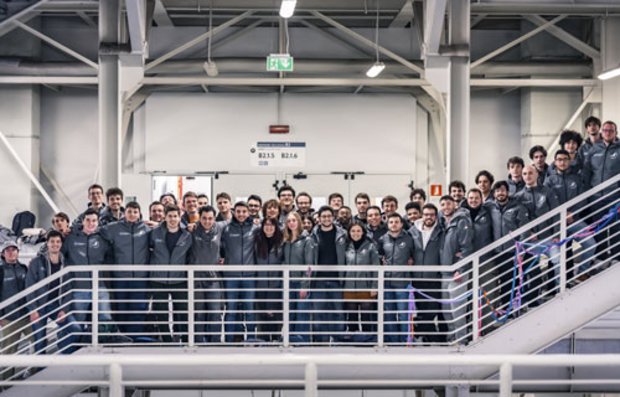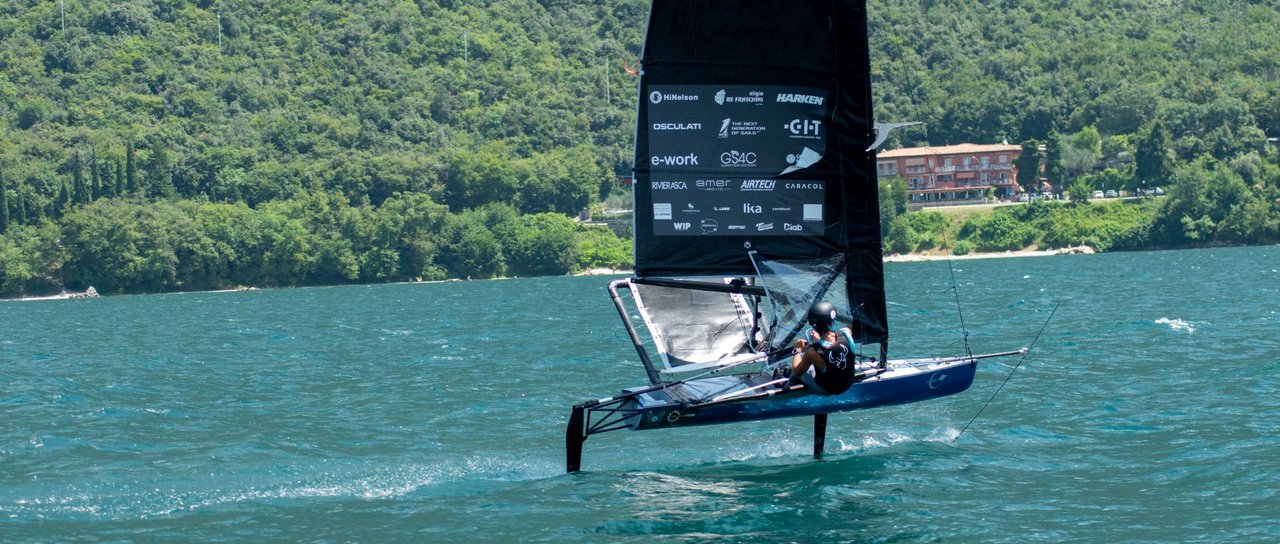SuMoth Challenge is a competition aimed at developing efficient and sustainable sailing boats. The teams experiment, design and build prototypes that meet the Moth sailing class requirements. These boats reach high speeds thanks to the use of foils, i.e., appendages that lift the boat out of the water, thus minimising friction. The competition has three phases: from the design to the construction of the prototype in the laboratory to the regatta.

Polimi Sailing Team has been active since 2007. Today it involves about 80 students from design, engineering and architecture programmes who work together to design, build and test their boat. Geometries that improve aerodynamic performance, sustainable materials and real-time digital navigation data acquisition systems are some of the elements that characterise the Team's projects. TETI and FEBE are the two boats built in 2021-2022 and 2022-2023, respectively: once perfected, they were able to sail - almost flying - on Lake Garda.
Get to know the team!
HELLO! THE POLIMI SAILING TEAM HAS EXISTED FOR SEVERAL YEARS NOW: WOULD YOU PLEASE TELL US SOMETHING ABOUT YOUR HISTORY?
The team was founded in 2007 and has participated in several editions of the 1001 Cup, an international student sailing competition. Since 2019, however, we have dedicated ourselves to building a prototype foil boat in order to participate in the SuMoth Challenge. The world of foil is different from that of classic sailing, so we decided to focus on the design of this specific type of boat.
YOU TAKE CARE OF EVERYTHING RELATED TO THE BOAT: FROM THE DESIGN TO THE CHOICE OF MATERIALS AND ITS REALISATION.
Yes, there are many aspects to be considered, which is why we are organised in different departments: sensors, structure, performance and short team, mechatronics and management. We can thus work autonomously: each of individual members and individual departments takes care of their own part, which will then be put together with the others.
During the year there are periods for designing the boat (which are quieter) and periods for building it... and the pace of work becomes more intense: in the workshop we perform the lamination and casting processes, the cross-linking of certain composite materials (to make them ready for assembly)...
Also important is the testing phase, which we usually carry out in Lecco. There is an initial phase of preparing the boat, which lasts about two hours, then we perform the various tests in the water, which last another two to three hours. The boat is either driven by a skipper or towed and followed by an inflatable boat, both for safety and support. After that, we go back to the ground and process the test results. Then we have a de-briefing and disassemble the prototype.
HOW DOES A FOIL BOAT WORK?
The boat is equipped with a foil, i.e., an aerodynamic appendage, which remains partially submerged in the water and behaves like a wing does in the air, allowing the boat to rise to a certain height above the surface of the water. As the boat travels, the air under the hull keeps it raised, the centre of gravity is lower and is stabilised by the skipper with mechanical control via a rudder. The height must be controlled because if the foil comes out of the water too much, the boat will capsize.
IN SHORT, YOURS IS A 'FLYING BOAT' ...
Yes, and seeing your 'creature' fly over the water is exciting: during the year you imagine it, you design it, you build it from scratch, you put it in the water (with all the unforeseen contingencies), and when you see it sailing, you see the result of the work of the whole group. And it is satisfying to hear experienced skippers say that the boat is perfect and to see so many enthusiasts watching the race! Not many university teams try their hand at this!
We like to think that we are taking up the historical legacy of Enrico Forlanini, the inventor of the hydroplane, who attended Regio Istituto Tecnico Superiore (which later became Politecnico di Milano), and carrying it forward into a new phase of innovation.
WHAT ARE THE NEXT INNOVATIONS YOU WILL EXPERIMENT WITH?
We would like to make the entire stabilisation system electronic. Currently it is mechanical: the skipper adjusts the height of the rudder using a mechanical control. We try to keep up with the innovations also adopted in the America's Cup. This is a very big challenge: we will have to design and build the hull of a new boat and in the meantime test the new electronic systems on the two boats we have built in the past years.

